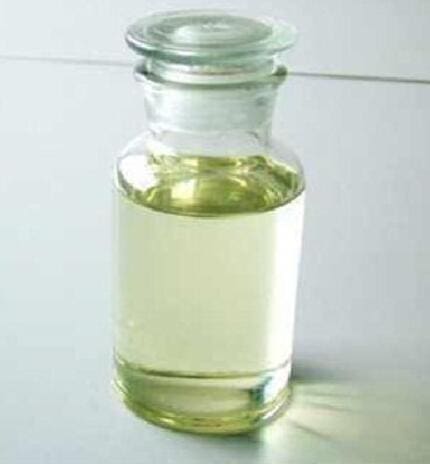Carboneum sulphuratum
Substance Background
Proving Information
First symptoms recorded from accidental poisoning in industrial workers in the mid-19th century; later pathogenetic trials conducted and published by various homeopathic physicians, notably in Allen’s Encyclopaedia and Clarke’s Dictionary.
Remedy Essence
Carboneum sulphuratum is the picture of slowly advancing neurodegeneration—a creeping paralysis of body and mind from toxic insult. The patient gradually loses coordination, vision, hearing, and memory, while sinking into apathetic weakness. It suits long-term industrial toxin exposure, chronic neuritis, and optic atrophy with spinal symptoms.
Affinity
- Central and peripheral nervous system – Progressive sensory and motor paralysis; incoordination [Hering, Allen].
- Special senses – Degenerative changes of optic and auditory nerves.
- Spinal cord – Sclerosis-like symptoms, especially posterior columns.
- Blood vessels – Toxic effects on vascular tone, producing congestion and degeneration.
- Digestive tract – Offensive breath, coated tongue, sluggish digestion.
- Skin – Pruritus, eruptions, ulcerations from impaired nutrition.
- Metabolism – Chronic poisoning states with gradual decline in vitality.
Better For
- Rest, avoidance of exertion.
- Gentle warmth in chronic states.
- Lying down during neuralgic pains.
Worse For
- Physical exertion, especially walking or climbing stairs.
- Mental strain or prolonged concentration.
- Alcohol.
- Damp cold weather.
- Night and early morning.
Symptomatology
Mind
Profound mental weakness and dulness, as if the brain were benumbed [Hering]. Difficulty fixing attention; ideas vanish mid-thought. Apathy, disinclination for mental or physical work. In toxic states, irritability alternates with depression; suspicious, restless, unable to remain long in one place. Loss of memory, especially for recent events, accompanied by a sense of confusion and unreality [Clarke].
Head
Vertigo on rising, with staggering gait. Dull, heavy headache, often occipital or over the eyes, worse from mental effort. Feeling of fullness in the head, with heat and throbbing. In chronic poisoning, slow deterioration of mental sharpness with constant pressure-like sensations [Allen].
Eyes
Progressive failure of sight from optic nerve degeneration [Hering]. Fog, mist, or black specks before eyes; photophobia in acute cases. Objects appear as if through a veil. Pupils sluggish, sometimes unequal.
Ears
Buzzing, humming, or roaring noises; difficulty hearing in noisy environments. Progressive deafness from auditory nerve involvement.
Nose
Diminished smell; nasal passages dry, sometimes with crust formation.
Face
Pale, worn expression; in chronic states, facial muscles lose tone, giving a mask-like look.
Mouth
Dryness, with thick, clammy saliva. Tongue coated white or yellowish-brown; speech slow, hesitant from tongue heaviness.
Teeth
Neuralgic pains darting to teeth from temples or ears.
Throat
Dryness and rawness; occasional choking sensation without obvious cause.
Stomach
Loss of appetite; distension after small amounts of food. Nausea in morning or after exertion. Sensation of sinking at epigastrium [Allen].
Abdomen
Flatulence, sluggish digestion; colicky pains from gas accumulation.
Urinary
Frequent urging with scanty discharge; in paralysis states, inability to completely void. Urine pale or dark, sometimes with phosphates.
Rectum
Constipation with ineffectual urging, due to paresis of rectal musculature. In advanced cases, involuntary stool from sphincter weakness.
Male
Loss of sexual desire and power in chronic intoxication; emissions without erection.
Female
Menstrual irregularities; menses scanty, delayed, with increased nervous symptoms before and after flow.
Respiratory
Breathing short, especially on ascending stairs; must stop to rest.
Heart
Palpitations on slight exertion, with weakness and trembling.
Chest
Oppression on breathing; tendency to sigh involuntarily. Pulse irregular, weak.
Back
Pain and stiffness in lumbar and sacral regions; weakness as if the spine could not support the body [Hering].
Extremities
Trembling and weakness, especially in lower limbs; staggering gait. Pains in calves, worse on walking. Feet feel heavy, as if weighted down. Tingling and numbness, advancing to loss of sensation.
Skin
Dryness, itching, sometimes with small vesicular eruptions. Ulcers in chronic cases, slow to heal.
Sleep
Restless, unrefreshing; vivid, anxious dreams. Wakes fatigued.
Dreams
Frightful dreams of falling, pursuit, or impending danger.
Fever
Chilliness with heat in head; low-grade fevers in chronic states.
Food & Drinks
Aversion to meat; desire for cold drinks.
Generalities
A remedy of insidious, progressive debility, especially of the nervous system. Produces multiple sclerosis-like pictures, locomotor ataxia, peripheral neuritis, and optic nerve atrophy [Clarke, Hering].
Differential Diagnosis
- Plumbum metallicum – Progressive paralysis, but Plumbum more gastrointestinal colic and retracted abdomen.
- Argentum nitricum – Optic nerve atrophy, incoordination, but with marked gastric flatulence.
- Gelsemium – Paralysis and trembling, but more acute, not progressive.
- Phosphorus – Optic nerve disease, weakness, but with marked burning sensations.
Remedy Relationships
- Complementary: Phosphorus, Plumbum.
- Antidotes: Nux vomica (for digestive symptoms), Camphor (acute poisoning).
- Follows well: Picric acid in nerve degeneration.
Clinical Tips
- Particularly valuable in optic nerve atrophy from toxic or metabolic causes.
- In locomotor ataxia, can slow progression and relieve incoordination.
- Useful in peripheral neuritis of alcoholic or diabetic origin.
- May help chronic industrial solvent toxicity recovery
Selected Repertory Rubrics
Mind:
- Memory, weakness of, recent events.
- Indifference to surroundings.
Head:
- Vertigo, rising from bed.
- Headache, worse mental exertion.
Eyes:
- Atrophy of optic nerve.
- Foggy vision.
Extremities:
- Trembling, lower limbs.
- Weakness, legs, progressive.
Generalities:
- Paralysis, progressive.
- Weakness from toxic exposure.
References
- Allen, T.F. – Encyclopaedia of Pure Materia Medica: Collated proving and poisoning records.
- Clarke, J.H. – Dictionary of Practical Materia Medica: Chronic nervous degeneration, optic atrophy.
- Hering, C. – Guiding Symptoms: Progressive paralysis, neuralgias.
- Hughes, R. – Cyclopaedia: Pharmacodynamic profile of CS₂.
- Farrington, E.A. – Clinical MM: Nervous system degeneration cases.
- Boericke, W. – Pocket Manual: Summarised keynotes and uses.
- Lippe, A. – Keynotes confirming spinal and optic symptoms.
- Kent, J.T. – Lectures: Clinical notes on progressive ataxia remedies.
- Nash, E.B. – Leaders: Nerve degeneration therapeutics.
- Boger, C.M. – Synoptic Key: Progressive weakness, atrophy.
Disclaimer
Educational use only. This page does not provide medical advice or diagnosis. If you have urgent symptoms or a medical emergency, seek professional medical care immediately.

